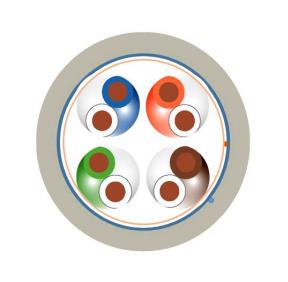There are three major differences between marine network cable and ordinary network cable:
1. Difference in transmission rate.
The theoretical transmission rate of marine network cable can reach 1000Mbps at most. In turn, the transmission rate of five types of network cables is 100Mbps, four types of 16mbps, three types of 10Mbps, two types of 4Mbps, and one type has only two core cables, which are generally only used as telephone cables, mainly for voice transmission.
2. Anti interference ability.
Due to the higher electrical performance index, the marine network cable has the characteristics of less attenuation, less crosstalk and less delay than the ordinary network cable, so its performance is better than the ordinary network cable. In addition, the super class 5 twisted pair generally adopts four winding pairs and one anti stay wire, so the strength will be better than that of ordinary network cable.
3. Structural process.
Ordinary network cable adopts two pairs of copper core cables to transmit data, supporting half duplex; The marine network cable adopts four pairs of copper core cables to transmit data, which can support duplex applications.
Post time: Aug-01-2022

